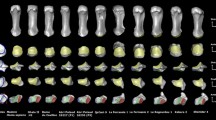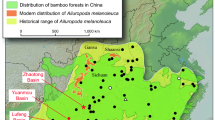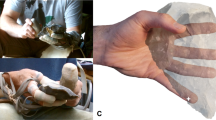Abstract
THAT Mr. Pocock (see NATURE, Feb. 4, p. 206) finds the radial sesamoid and the palmar pad that covers it are “capable of only slight movement” in the dead specimen may perhaps be explained in part by the rigidity of the tissues in the undissected cadaver. For most certainly, during the progress of dissection, a very high degree of mobility is demonstrated; and even in the bones themselves, the same fact is attested to in the large, bevelled cartilage-covered joint surface between the scapholunar and the sesamoid.
This is a preview of subscription content, access via your institution
Access options
Subscribe to this journal
Receive 51 print issues and online access
$199.00 per year
only $3.90 per issue
Buy this article
- Purchase on Springer Link
- Instant access to full article PDF
Prices may be subject to local taxes which are calculated during checkout
Similar content being viewed by others
Author information
Authors and Affiliations
Rights and permissions
About this article
Cite this article
JONES, F. The ‘Thumb’ of the Giant Panda. Nature 143, 246 (1939). https://doi.org/10.1038/143246b0
Published:
Issue Date:
DOI: https://doi.org/10.1038/143246b0
This article is cited by
-
Earliest giant panda false thumb suggests conflicting demands for locomotion and feeding
Scientific Reports (2022)
Comments
By submitting a comment you agree to abide by our Terms and Community Guidelines. If you find something abusive or that does not comply with our terms or guidelines please flag it as inappropriate.



